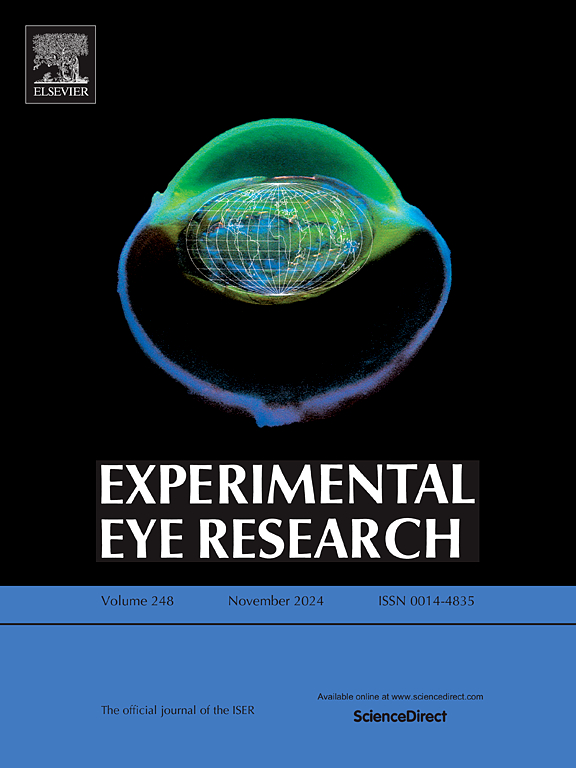Doxycycline mitigates corneal fibrosis by suppressing the focal adhesion pathway
IF 3
2区 医学
Q1 OPHTHALMOLOGY
引用次数: 0
Abstract
The cornea, as a key barrier of intraocular tissues, is vulnerable to various injury factors. Acute alkali burns, as an ophthalmic emergency, can cause serious pathological changes such as persistent corneal epithelial defects, ulcers and even perforations. Doxycycline has been proven to have inhibitory effects on matrix metalloproteinases and anti-inflammatory effects, etc. This study focuses on the therapeutic value of doxycycline in corneal alkali burns. In vitro experiments have shown that it can significantly inhibit the expression of Fibronectin and Collagen III by regulating the Focal adhesion(FA) signaling pathway, thereby reducing corneal scar. In vivo experiments further confirmed that doxycycline eye drops accelerated wound healing and improved corneal transparency through the FA signaling pathway. In conclusion, this study systematically clarified the corneal protection mechanism mediated by doxycycline through the FA signaling pathway, providing a new intervention strategy for the prevention and treatment of corneal alkali burns in clinical practice.
强力霉素通过抑制局灶性粘附途径减轻角膜纤维化。
角膜作为眼内组织的关键屏障,容易受到各种因素的损伤。急性碱烧伤作为眼科急症,可引起持续性角膜上皮缺损、溃疡甚至穿孔等严重的病理改变。强力霉素已被证明具有抑制基质金属蛋白酶和抗炎等作用。本研究主要探讨强力霉素在角膜碱烧伤中的治疗价值。体外实验表明,它可以通过调节Focal adhesion(FA)信号通路,显著抑制纤维连接蛋白和胶原III的表达,从而减少角膜瘢痕。体内实验进一步证实强力霉素滴眼液通过FA信号通路加速创面愈合,提高角膜透明度。综上所述,本研究系统阐明了强力霉素通过FA信号通路介导的角膜保护机制,为临床预防和治疗角膜碱烧伤提供了新的干预策略。
本文章由计算机程序翻译,如有差异,请以英文原文为准。
求助全文
约1分钟内获得全文
求助全文
来源期刊

Experimental eye research
医学-眼科学
CiteScore
6.80
自引率
5.90%
发文量
323
审稿时长
66 days
期刊介绍:
The primary goal of Experimental Eye Research is to publish original research papers on all aspects of experimental biology of the eye and ocular tissues that seek to define the mechanisms of normal function and/or disease. Studies of ocular tissues that encompass the disciplines of cell biology, developmental biology, genetics, molecular biology, physiology, biochemistry, biophysics, immunology or microbiology are most welcomed. Manuscripts that are purely clinical or in a surgical area of ophthalmology are not appropriate for submission to Experimental Eye Research and if received will be returned without review.
 求助内容:
求助内容: 应助结果提醒方式:
应助结果提醒方式:


